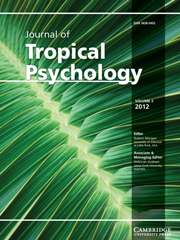No CrossRef data available.
Article contents
Dream Sharing as a Healing Method: Tropical Roots and Contemporary Community Potential
Published online by Cambridge University Press: 11 December 2014
Abstract
Comparing the healing experiences reported by members of indigenous dream groups such as the Senoi of Malaysia and others to those reported by members of American grassroots dream appreciation groups, and considering the views of previous researchers who have studied these groups, it is seen that there are many aspects of dream sharing in the community that have potential healing capacities. There are critics who claim that the lack of a professional group leader will put group members at risk. But problems can be avoided with proper communication, education, and appropriate dream group leadership. The experience of healing by dream sharing in community is qualitatively unique depending on the cultural context and worldview. There are many forms of dream sharing and healing that have been reported by those who have shared dreams in various world communities. In Western societies lack of interest, fear, and safety concerns have influenced the paucity of dream sharing. Many forms of dreamwork in groups have included both healing and education as potential goals. There is room for new ideas to be implemented and built upon that could creatively help nourish those parts of the world that are suffering from social and cultural dream-impoverishment.
- Type
- Articles
- Information
- Copyright
- Copyright © The Author(s) 2014




